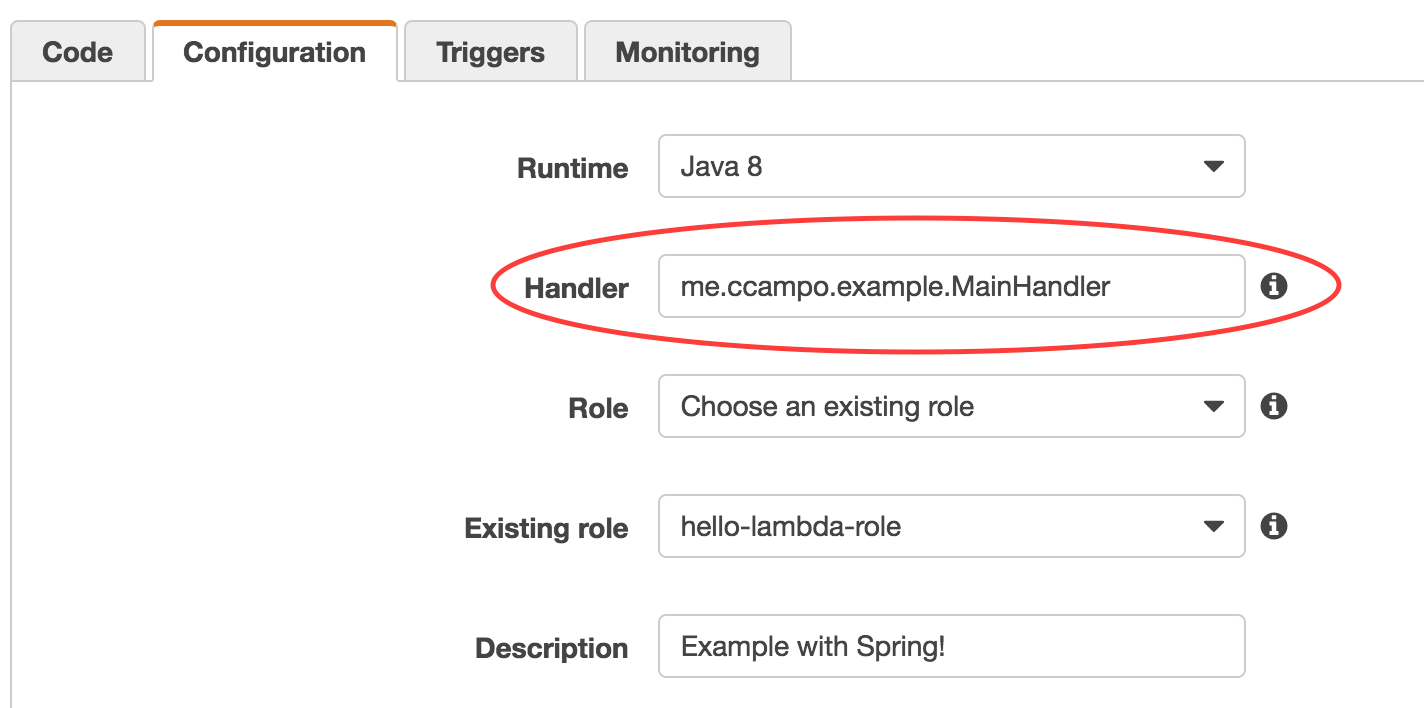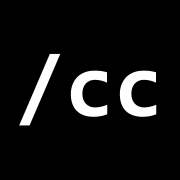Using Spring with AWS Lambda
by C. Campo - 5 min read
I love AWS Lambda. Removing the concept of a “server” from your application is huge. I won’t go into all the benefits of Lambda, but I can say from first hand experience, it not only eliminates countless hours of worrying about servers and infrastructure, but also makes backend application development a breeze. Oh, and for most small stuff, it’s pretty much free.
Lambda currently supports three languages for application development - Javascript (via NodeJS), Python, and Java. My
preferred language for Lambda is Java 1 for its static typing, maturity, and open source community… plus it’s
what I write mostly in my day job. The Lambda API for Java is simple - you write a class that implements one of their
interfaces (RequestHandler) or you write a “handler” method with a specific signature and tell Lambda to call it. You
can read the docs for the specifics, but suffice to say that it’s simple.
While the Java API is nice, it’s pretty bare-bones. Also, since AWS Lambda requires your RequestHandler
implementation to have a default, no-arg constructor, writing RequestHandlers with dependencies becomes tricky from
a testability standpoint. For example, imagine our RequestHandler requires a data-access-object (DAO) class. If we
want to write some unit tests for this RequestHandler, we have no way of stubbing this DAO since it has to be
instantiated either as a field or in the no-arg constructor. Typically the way to solve this problem is using
Dependency Injection/Inversion of control.
My library of choice for dependency injection (among with a bunch of other cool features) is Spring. There is a bit of boilerplate with integrating Spring into AWS Lambda, so I wrote a small library for eliminating some of that, as well as providing a pattern for writing testable, Spring-enabled lambda functions.
Enter Spring AWS Lambda (clever title, I know!). The general gist here is that this library
provides a few abstract classes which build on top of the AWS Lambda Java API’s RequestHandler interfaces. Instead
of implementing AWS’s interfaces directly, you extend one of these new abstract classes and voila!, you can now use
Spring’s dependency injection with your Lambda functions.
The meat of the Spring AWS Lambda library is the SpringRequestHandler class. Basically,
instead of implementing RequestHandler directly, you extend this class and provide it with a
Spring ApplicationContext. Then you can implement as many RequestHandlers as you want and provide injectable
dependencies to them. See the library source code for more details, but examples are worth more than words, so here’s a
quick one (NOTE: the rest of this post assumes a working knowledge of how Spring dependency injection works):
public class MainHandler extends SpringRequestHandler<Request, Response> {
/**
* Here we create the Spring ApplicationContext that will
* be used throughout our application.
*/
private static final ApplicationContext context =
new AnnotationConfigApplicationContext(ApplicationConfiguration.class);
@Override
public ApplicationContext getApplicationContext() {
return context;
}
}MainHandler is the entry point to your application. On the AWS Lambda configuration console, you actually set this
as your “Handler” (see screenshot below). Note that MainHandler will rarely have any logic itself. Instead, you
simply tell it the request and response types via the generic type parameters (these can be anything you want), and
implement the getApplicationContext abstract method, which should provide a reference to your application’s main
ApplicationContext.

If you look at the guts of SpringRequestHandler, you’ll notice that it actually
implements the RequestHandler class itself and provides a default handleRequest method implementation, that
actually retrieves a Spring bean of type RequestHandler and calls that bean’s handleRequest method. You are free
to override this method yourself if you want to add any additional logic, but that’s the general gist of it.
More on that - since SpringRequestHandler gets a bean of type RequestHandler and calls that bean’s handleRequest
method, that means that all of your main application logic should go in your own implementation of RequestHandler,
and this class should be declared a bean.
This might seem not much different than the default AWS programming model. Well you’re right - it’s not. In fact,
it’s almost exactly the same. The key difference here though is that now any RequestHandler you implement yourself
can take advantage of using Spring’s annotations and dependency injection. All you have to do is register it as a bean.
Here’s an example of your own Spring-enabled request handler:
@Component
public class ExampleRequestHandler implements RequestHandler<Request, Response> {
/*
* These can be anything you want; if they're registered as
* Spring beans, they'll be injected below via autowiring.
*/
private final ExampleServiceA exampleServiceA;
private final ExampleServiceB exampleServiceB;
/**
* Dependency injection is handled via autowiring!
*/
@Autowired
public ExampleRequestHandler(final ExampleServiceA exampleServiceA, final ExampleServiceB exampleServiceB) {
this.exampleServiceA = Objects.requireNonNull(exampleServiceA, "exampleServiceA");
this.exampleServiceB = Objects.requireNonNull(exampleServiceB, "exampleServiceB");
}
@Override
public Response handleRequest(final Request input, final Context context) {
final String responseMessage = "Request message: " + input.getMessage()
+ ", Service A message: " + exampleServiceA.getMessage()
+ ", Service B message: " + exampleServiceB.getMessage();
final Response response = new Response();
response.setMessage(responseMessage);
response.setStatus(Response.Status.OK);
return response;
}
}Note that we declare this RequestHandler as a bean by use of the @Component annotation. When your AWS Lambda
function is run, it will actually invoke the handleRequest method of ExampleRequestHandler (via the MainHandler
proxy).
The key to take away here is that in our ExampleRequestHandler class, we are now able to take advantage of using
Spring for dependency injection. This means we can inject dependencies, like services, DAOs, etc., via the
constructor. This is huge for testability! Since AWS Lambda requires that your handler class have a default, no-arg
constructor, dependencies would be typically hardcoded and tough to mock or stub in a testing environment. Now, we
have a logic-less MainHandler class which we pass to AWS Lambda’s console, and a fully
testable/mockable RequestHandler implementation!
For more information, and a more complete example, please see the docs and example module on Spring AWS Lambda’s
Github page. I hope this helps you enjoy using AWS Lambda even more!
-
I really prefer Kotlin, since the Lambda runtime is really just the JVM and Kotlin works great with Lambda! ↩
Subscribe via RSS
